ART OF OPPORTUNITY
Call it land art, graffiti, urban blight or environmental vandalism. I call it “art of opportunity,” and I’m often glad to find surreptitiously yet carefully constructed works of art out in the world. Mostly modest, this outdoor art is unsanctioned and temporary, sometimes ugly, and admittedly illicit. I would argue that it is also an incredible manifestation of the artistic spirit.
Why does this art intrigue me? I give it space because the artists are so obviously inspired. They use the world as their canvas and work anonymously. Often, they make art with materials on hand; rocks, driftwood, broken objects, trash. What I like best is that the artists go about their work with utmost concentration, stealth, and skill, and then they move on. The forces of nature take over and the creations last a little or a long time, and then, so what?
Artists used to haunt the Emeryville mudflats of the East Bay, and their sculptures of natural materials and discarded objects enchanted drivers along highway 80 for years. The landscape was ever-changing due to tides, weather, and overzealous wrecking crews. Memorably, in junior year, my high school art class made a giant hand from a found raft, tires, string, and driftwood there. While it is now officially prohibited, you can still see a few intrepid works perched above the waves.
In related art making memories, I recall sandcastles and daisy chains; collecting and arranging beach glass and shells; making rooms out of fallen branches; eating from plates made of leaves and drinking from tea cups made of seed pods; as well as a special “money tree” with leaves we used as currency. We would play all day and then go in for dinner and bedtime, just to start again the next day.
Emeryville mudflats October 1978
More recently, on walks at shores and parks, I’ve found evidence of the same creative impulses. These include rock sculptures at the Berkeley Marina, driftwood lean-tos at Cambria, elaborate sand castles at Aquatic Park, and flower petal mandalas on the UC Berkeley campus. It is brightly evident that the makers of these things were inspired by their surroundings and set about their work with enthusiasm, focus, and aesthetic vision.
Sometimes I try to imagine the artists. Are they young or old? Solitary or with others? Inspired in the moment or on a mission? Tranquil or hurried or scared of discovery? Working quickly and spontaneously or carefully and methodically? Carrying tools or using their bare hands? Do they hide in the bushes to watch other people encounter their work, or do they make it and leave unconcerned? I wonder, yet this art must be credited to “anonymous artist,” foremost because attribution is unavailable and also is besides the point in these works of joy–or compulsion that are made and then left to the winds.
Art of opportunity has parallels–or has expanded into–the “claimed” art world. For instance, the related fields of Earth Art and Environmental Art. Earth art, known also as Land Art or Earthworks, takes elements from the natural landscape to create site-specific structures, art forms, and sculptures. It is related to abstract expressionism and minimalism in that the practitioners of earth art challenge the traditional mode of artist studio and gallery. Spiral Jetty (1970) by Robert Smithson on the shore of the Great Salt Lake in Utah is one famous example. In environmental art, artists explore the relationship between humans and the environment by embedding their artistic practice within nature or incorporating natural materials into new environments. As “Artivists,” they often make pointedly political statements to champion conservation causes. I’m inspired by the work of artists such as Andy Goldsworthy and Nancy Holt, who make beautiful work from natural materials and acknowledge the temporal nature of such work, as well as by eloquent environmental artivists I’m personally privileged to know. But, unlike the artists of opportunity who are the subjects of this essay, their work is attributed and carefully documented.
Perhaps the creators of carefully balanced rock sculptures at the water’s edge are similarly motivated. Or, under cover of night, they simply find pleasure in collecting rocks to build their little sculptures on driftwood planks, over and over again as the tides obliterate their efforts and clean the slate for new work. Maybe the locals in Cambria know who makes the dozens of driftwood structures on the long beach, collecting large pieces and assembling rows of sturdy architecture, each a carefully calibrated engineering and aesthetic wonder. I was surprised that these lean-tos were not inhabited, nor polluted with trash. While seemingly anonymous, the site was curiously curated and clean.
Cesar Chavez Park, Berkeley CA
Cambria CA
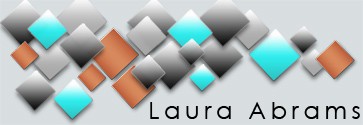
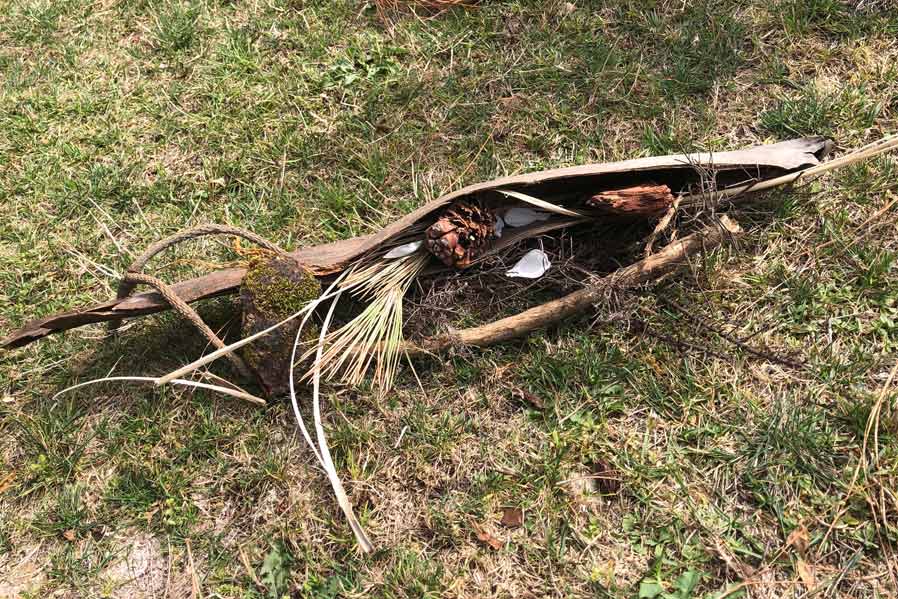
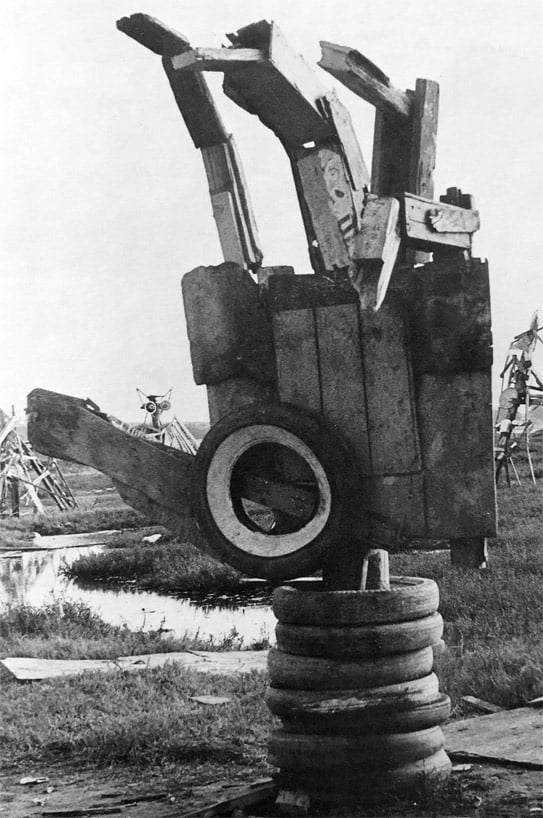
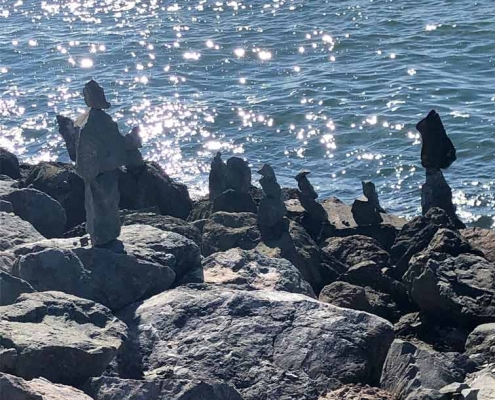
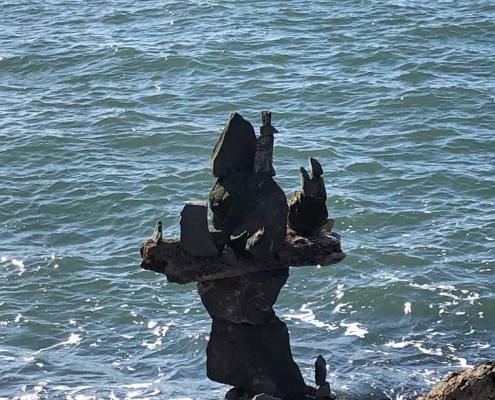
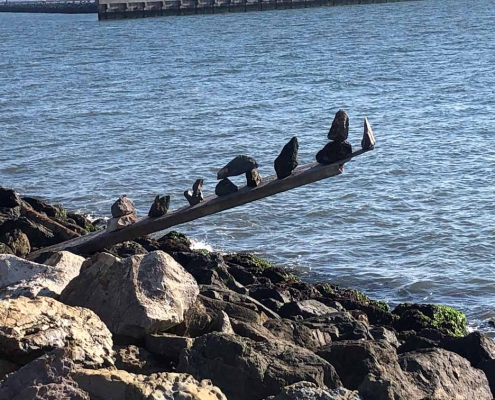
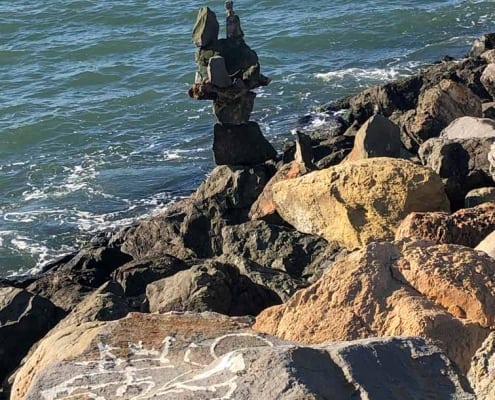
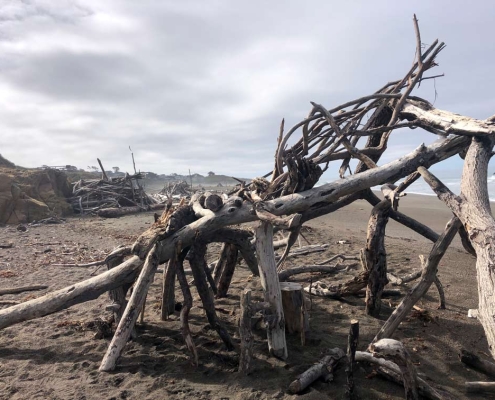
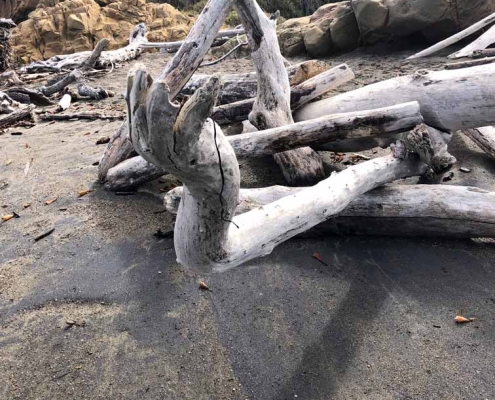
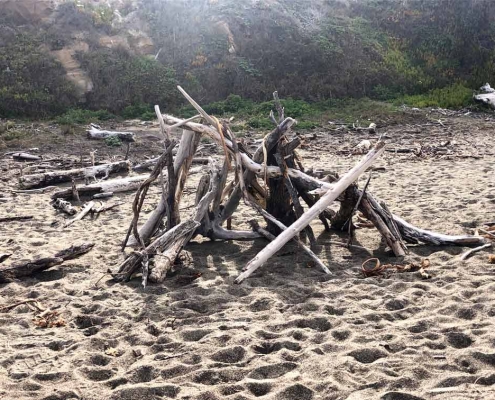


Leave a Reply
Want to join the discussion?Feel free to contribute!